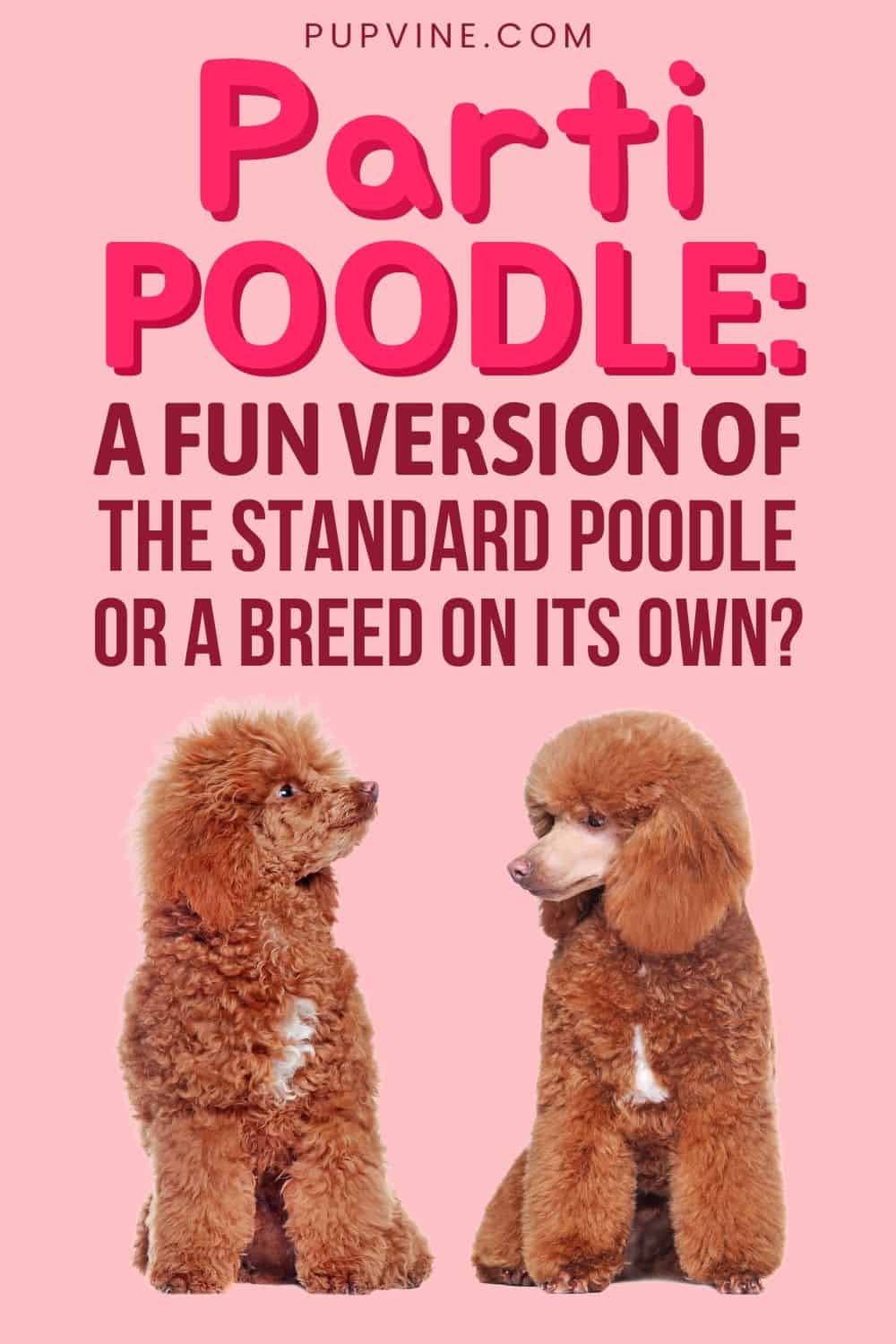To get the mystery solved right away, it’s a parti Poodle, not a party Poodle. This means that it’s not a breed that loves partying hard, it’s just another color variation of the amazing Poodle breed!
We’re sure you already know how amazing the Standard Poodle is, but how about the parti Poodle? Have you seen one before? Do you know what a parti Poodle looks like? Let’s get straight to business and teach you a thing or two about the origin of the Poodle and it’s unique variation – the parti Poodle!
Get To Know The Standard Poodle
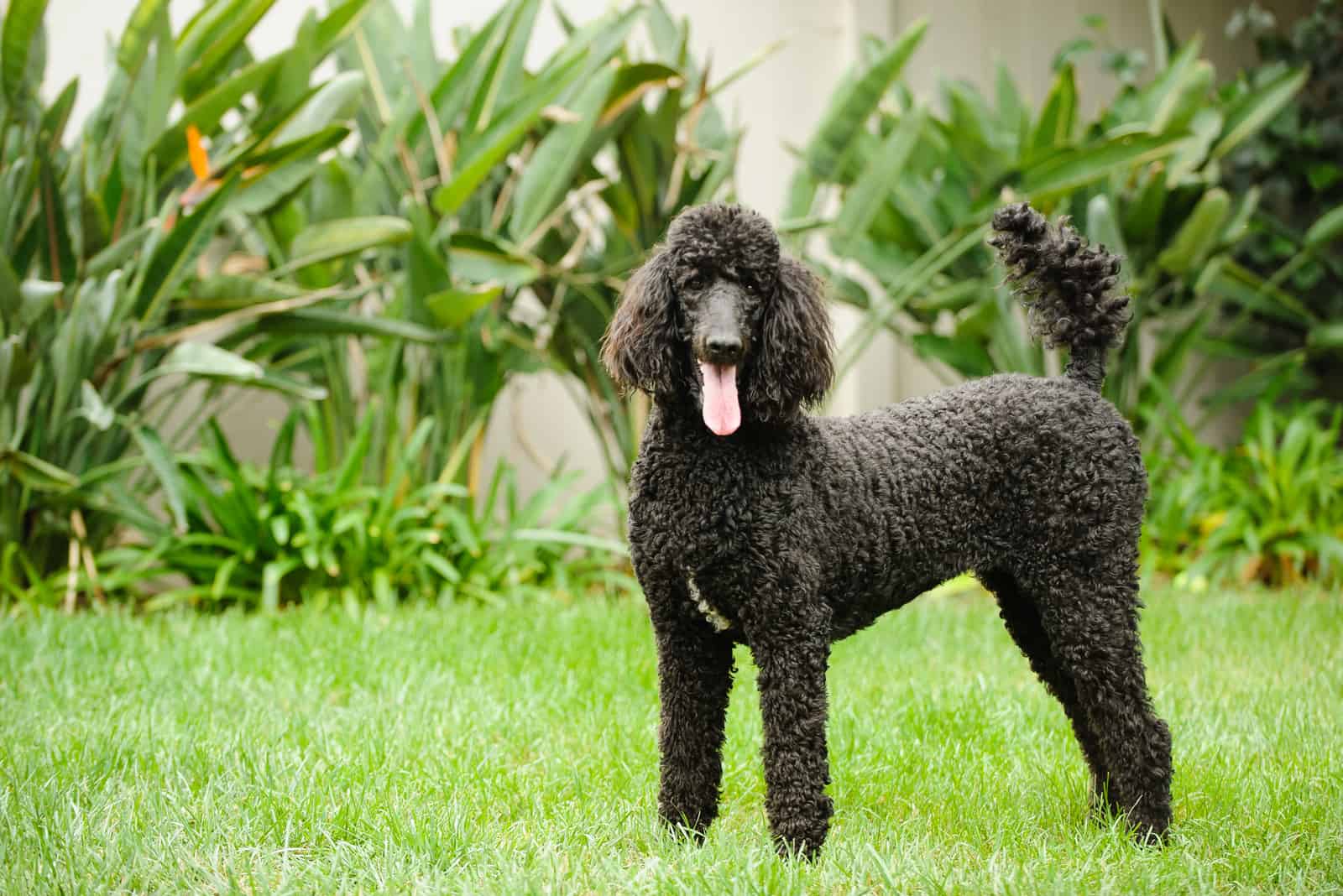
Owning a poodle nowadays represents a luxurious life full of prestige, but those who think this way couldn’t be any more wrong. Poodles are, in fact, real dogs that do real jobs. Although you can’t tell that from their primped-up look, Poodles have once been bred as water retrievers – dogs that fetched waterfowl for hunters.
The name Poodle comes from the German word Pudel or Pudelin, which means to splash in the water. The French use the word Caniche, a derivation from Chien Canard – a duck dog.
Even the dog’s coat styling once had a practical purpose. The trimmed areas lightened the weight of the dog’s coat, so that it doesn’t snag on underwater debris. The long hair around the joints and vital organs protected the dog from the cold water.
There are three sizes of Poodles, and all three of them belong to the same breed. Going from the smallest to the largest, those sizes are Toy Poodle, Miniature Poodle, and Standard Poodle. Some dog experts include teacup and moyen sizes too.
The oldest size variety is the Standard Poodle. Some of them even continue to carry the old tradition of working as water retrievers.
All Poodle sizes are playful dogs with dignified personalities and sharp intelligence. They’re A++ students in training, and they are excellent in performing obedience, agility, and hunting tasks.
The Poodle may appear to be a snobbish dog, but it’s actually one of the kindest family dogs you’ll ever encounter. They get lonely when left alone for a long time, and always seem to want to be around their families to snuggle or play.
The Poodle History: Where Does The Breed Come From

As we mentioned earlier, the Poodle is one of the oldest breeds developed especially for hunting waterfowl. Most historians agree the breed was first found in Germany, but the French developed the distinctiveness of the breed.
Many agree that the breed is the result of crosses between several European water dogs (Spanish, Portuguese, French, Hungarian, German, and Russian). Some other historians claim that the Poodle ‘s ancestor is the North African Barbet, which was imported to the Iberian Peninsula, and later arrived in Gaul.
Another common belief is that the Poodle is a descendant of Asian herding dogs that traveled with the Germanic Goth and Ostrogoth tribes.
Yet another theory claims that these dogs were brought out of the Asian steppes by the conquering North African Berbers, and later found their way into Portugal in the eighth century with the Moors.
Whichever story is the truth, this is a very old dog breed, and probably the only one with so many origin stories. Poodle-like dogs were adored by the ancient Egyptians and Romans. The drawings found on artifacts and tombs dating from the first century B.C. show a dog that looks a lot like today’s Poodle.
Even though many historians claim that Miniature and Toy Poodles appeared shortly after the Standard version, the truth is that these sizes weren’t bred until the 1400s. The Miniature size first appeared, followed by the Toy Poodle.
The Toy and Miniature varieties were created by breeding small Poodles with each other, not by breeding with other breeds, which mean that this is a completely purebred dog.
All the Poodle sizes had their jobs. The French used the Standard Poodle for duck hunting while the Miniature one sniffed for truffles in the woods. The Toy Poodle was usually a companion for the nobility and wealthy classes.
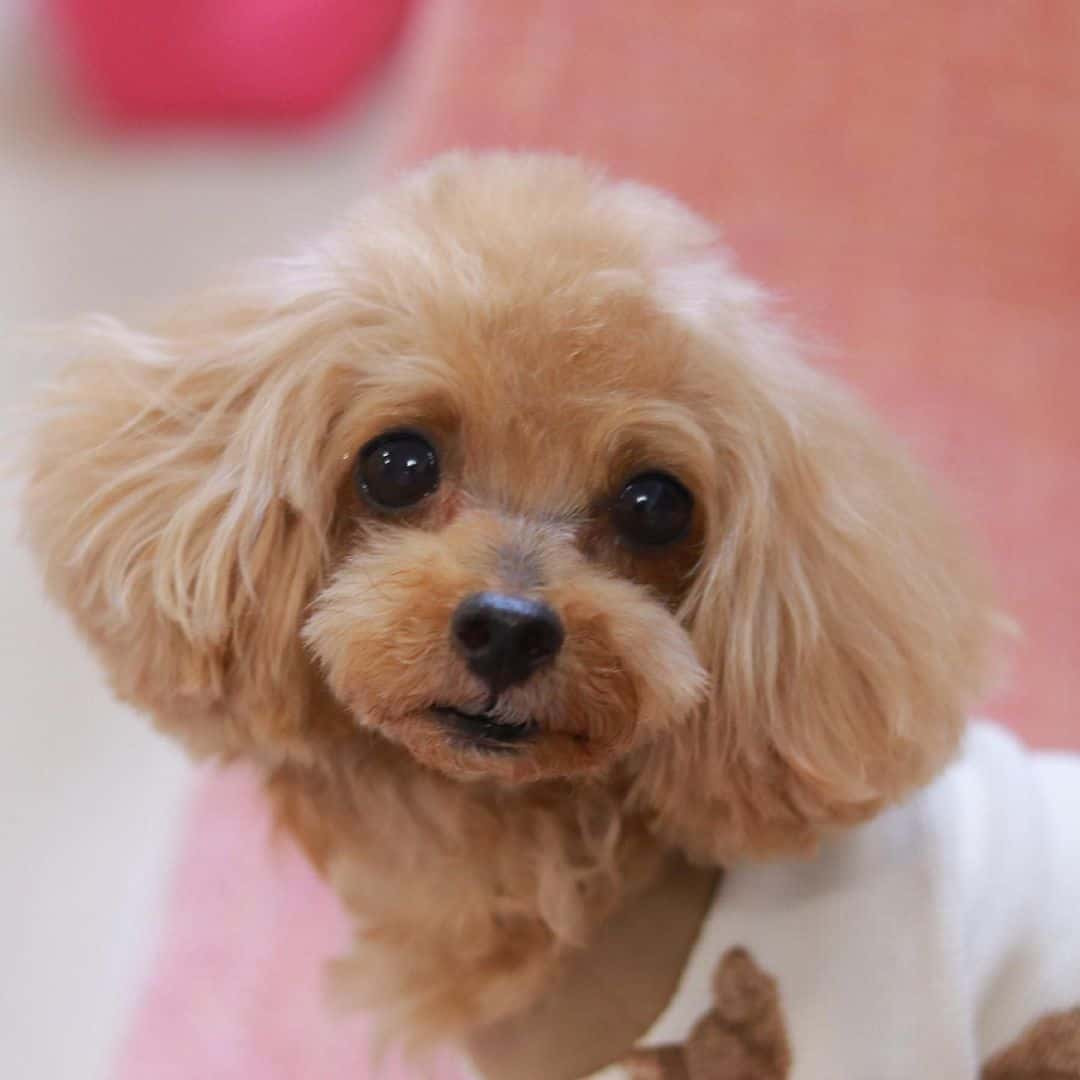
Photo from @391kozue
Often carried in the large shirtsleeves of wealthy Renaissance people, the Toy got the nickname, sleeve dog.
Gypsies and traveling performers showed that Poodles were excellent as circus dogs. These were smart animals that mastered all the tricks and made the audience feel amused. Circus owners often dressed Poodles in costumes and sculpted their coats into fancy shapes.
Wealthy owners copied what they did and started clipping, decorating, and even dying their Poodle pooches; hence, where all the fancy dog grooming started!
The first Poodle registered by The Kennel Club in England was in 1874.
It’s not certain when the Poodles arrived in the USA, but The American Kennel Club (AKC) registered their first Poodle in 1886. The Poodle Club of America was founded in 1896, but it didn’t last for long. It was reinstated again in 1931.
Poodles were quite rare in the States before World War II. By the mid-1950s, the popularity of the breed began rising. The Poodle became the most popular breed in the country and held that position for more than 20 years.
Nowadays, their popularity isn’t decreasing. In fact, Poodles are still so beloved that many breeders choose them to breed with other dogs in order to make more awesome breeds.
Now that you know about the spectacular origin of the breed, it’s time to learn a bit more about one special Poodle color – the parti Poodle!
What Makes The Parti Poodle So Special?

Standard Poodle puppies are usually solid-colored dogs. There are many different colors, but the most common ones are either all black, white, red, blue, or apricot… but, there is always an exception. Some Poodles can be born with large patches of white. Such is the parti Poodle.
To classify one as parti-color, the dog must have more than 50% of his body in white base color. The other color can be any common one like blue, black, brown, apricot, etc.
The parti patching is irregular and random. There are no two of the same parti Poodles… each one looks unique. Want to have a one-of-a-kind dog? Here’s the perfect one for you!
Because the parti-color pattern pops up randomly, the demand for these puppies is high. Finding available puppies with specific white markings will be a difficult task for you.
Temperament Of The Poodle Breed: Are Parti Poodles Like Other Poodles?

Just like all the other Poodles, the parti Poodle is extremely intelligent and attaches closely to one person. This is a one-person dog, but it’s still fond of the rest of the family. The Poodle requires regular daily exercise and interaction to stay happy and well-behaved.
Bored Poodles are not something you want to see because they go destructive in 0.1 seconds or act anxious.
If you don’t have at least two hours a day to care for your Poodle, regardless of its color, then this isn’t the best dog for your needs. Poodles are a nervy breed, meaning they easily develop anxiety, excessive barking, aggressive behavior, or nasty habits like peeing indoors.
Keep them fit, along with physically and mentally amused, and you’ll have a healthy and well-behaved Poodle.
Training Parti Poodle Puppies
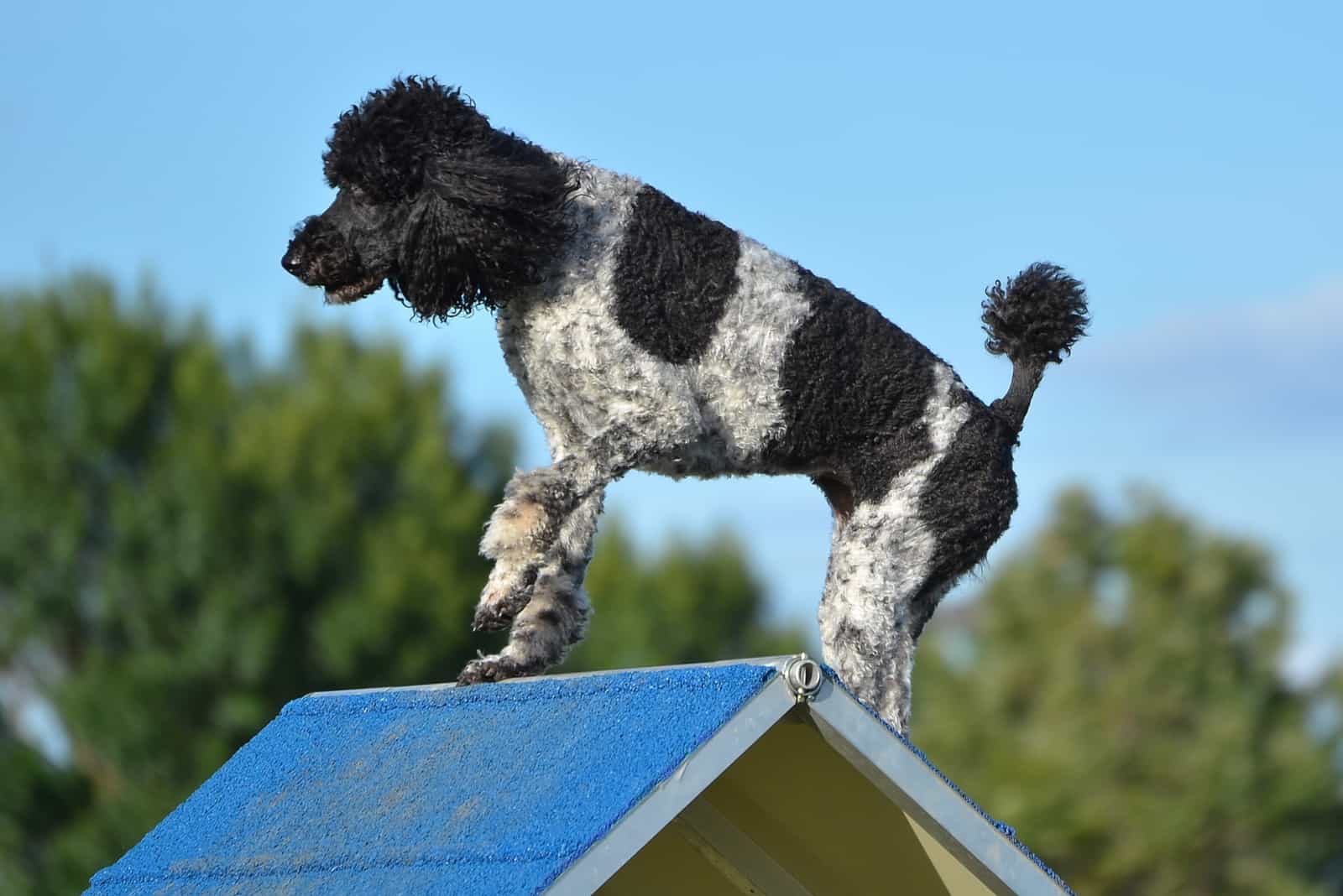
We purposely said parti Poodle puppies because training should start at a young age.
As we mentioned before, the parti Poodle is a highly intelligent breed that requires plenty of mental and physical stimulation. Starting this at a young age is the only way you can have a well-behaved adult dog of any breed, not just a parti Poodle!
Poodles are straight-A students, but it’s always a good idea to use plenty of positive reinforcement to award good behavior. Treats, cuddles, and scratches work like a charm!
Here are the most important skills you should teach your parti Poodle puppy:
• coming when called
• walking on a leash
• not running out the door
• sitting calmly when asked
• not jumping up at people
Whatever you do in training, don’t use punishment at any cost. It can only create negative feedback coming from your dog.
Poodle Coat Color And General Grooming Rules
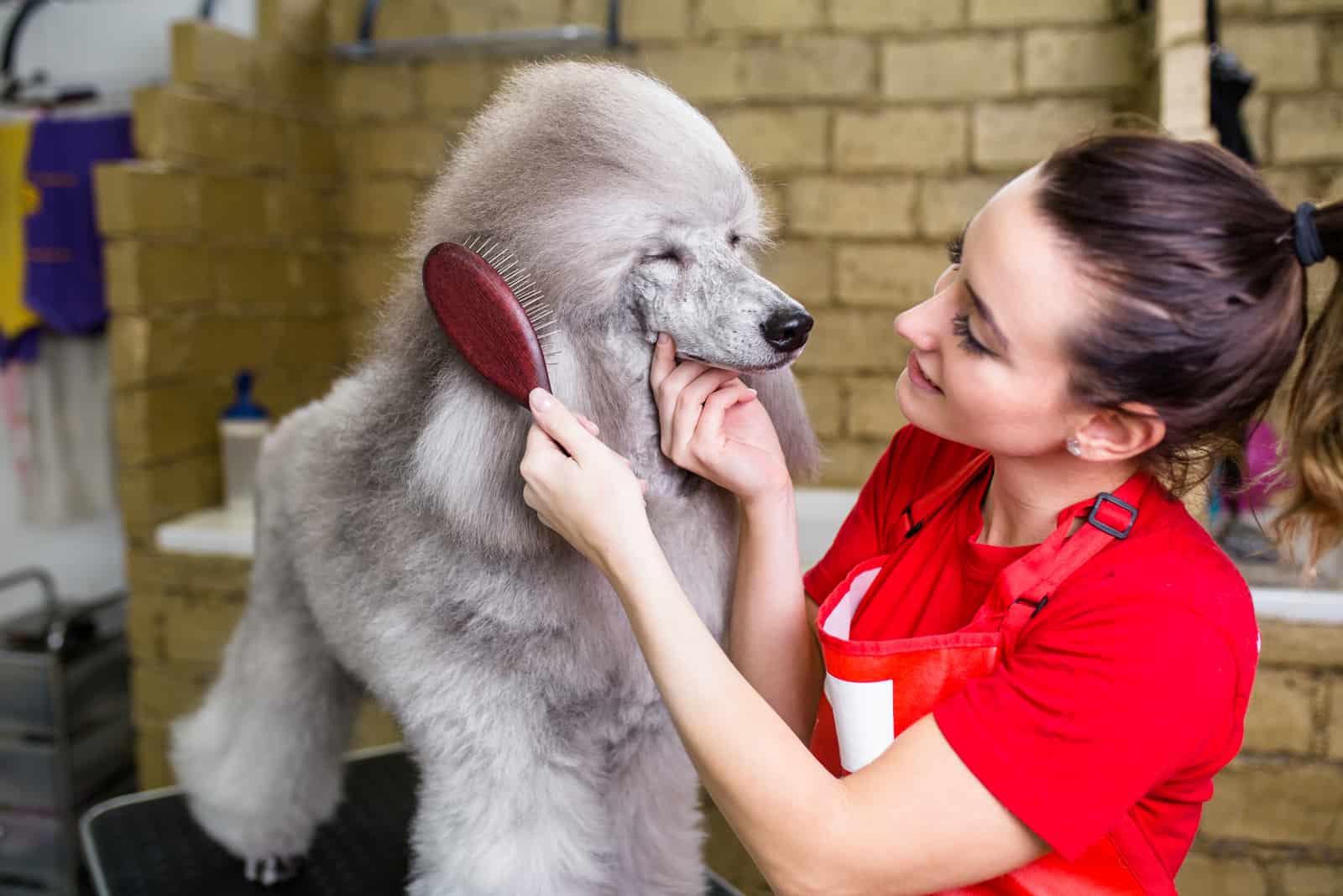
Poodles are the number one dog choice for people prone to allergies. They have hypoallergenic traits that can also be found in their crossbreeds. No wonder why we have so many wonderful Poodle crosses! It’s the hypoallergenic, non-shedding coat that attracts them all.
Still, this doesn’t mean that the Poodle doesn’t require brushing or bathing.
Brushing a Poodle is extremely important. Do it several times a week, visit a professional groomer for a trim, and bathe him every one or two months. Matting appears quickly in their dense, coarse coat. Besides, it’s also painful to the point that it can lead to having the dog shaved down to its skin.
If you’re not a grooming talent yourself, start bringing your puppy to one as soon as possible. Puppyhood is the right time to start visiting the groomer, so the dog gets used to the fact that he will be washed and cleaned regularly.
Moving on…
All Poodle colors require the same grooming approach. There are no differences between blue, black, white, silver, brown, apricot, cream, white tuxedo, silver beige, merle, or café-au-lait. The hair is always curly, wiry, and dense. Such a unique texture can be manipulated into all kinds of fancy styles.
But, you can’t go that crazy with the hairstyle if you want to compete in dog shows. The AKC and the UKC ( United Kennel Club ) allow only four specific breed standard clip styles to enter the conformation competitions.
Grooming a Poodle takes a lot of patience. They’re high-maintenance dogs that require regular grooming every three to six weeks, sometimes more often! If you’re not a good groomer, then consider the costs of upkeeping the coat in a professional grooming salon.
Still, this isn’t any reason to be scared. There are many ways to style the coat for simpler care. Actually, many owners just shave it off, but shaved Poodles need care, too! They also need to be brushed, bathed, and trimmed every three to six weeks in order to keep their coat clean, short, and tangle-free.
Most owners pay a professional groomer, but if you’re dedicated and have the time, you can learn to groom your Poodle as a professional at home. You’ll need a good set of electric clippers and blades, a quality pair of scissors, a brush, a comb, a toenail trimmer, and a big fat book on grooming Poodles.
Even if you let a professional handle the complicated stuff, your Poodle still needs daily brushing. Because Poodles don’t shed like other breeds, loose hair collects in their coats, and unless it’s brushed out daily, the hair will mat very quickly.
You have probably noticed stains under the eyes. Many Poodles have these weepy eyes, especially the light- color Poodles. Wiping around the eyes and face every day with alcohol-free pet wipes or with a dampened washcloth will reduce these stains.
Ears are also a problematic body part. Check them every week for dirt, redness, or bad odor. All these symptoms can show you that there might be an ear infection. Breeds with drop-down ears are usually prone to ear infections because their ear canal is always dark and moist.
Also, a Poodle’s ears often have hairs growing inside them. Sometimes, these hairs need to be plucked, but it’s best to check first with your groomer or the vet.
Brushing the Poodle ‘s teeth is another important part of the grooming process that mustn’t be skipped. Brush their teeth at least two or three times a week to remove tartar buildup and bad bacteria. Daily brushing is even better because it helps to prevent gum disease and bad breath.
Dogs, including Poodles, wear down their nails naturally, but in case that doesn’t happen, you can cut them once or twice a month. Short and neat nails keep their feet in good condition and keep your legs scratch-free when your Poodle jumps up to say “Hi”.
Getting your dog used to grooming and bathing should start in early puppyhood. It’s especially important to have them get used to touching their paws because they’re a bit touchy about them.
Grooming can be a positive experience filled with praises and rewards, which will set the groundwork for easy vet exams.
As you groom, pay attention to sores, rashes, redness, tenderness, or inflammation on the skin, in the nose, around the eyes, and on the feet. Eyes should always be clear with no redness or discharge. Once you get the hang of it, grooming should become an easy routine for both you and your Poodle.
Where Do Parti Standard Poodles Come From?
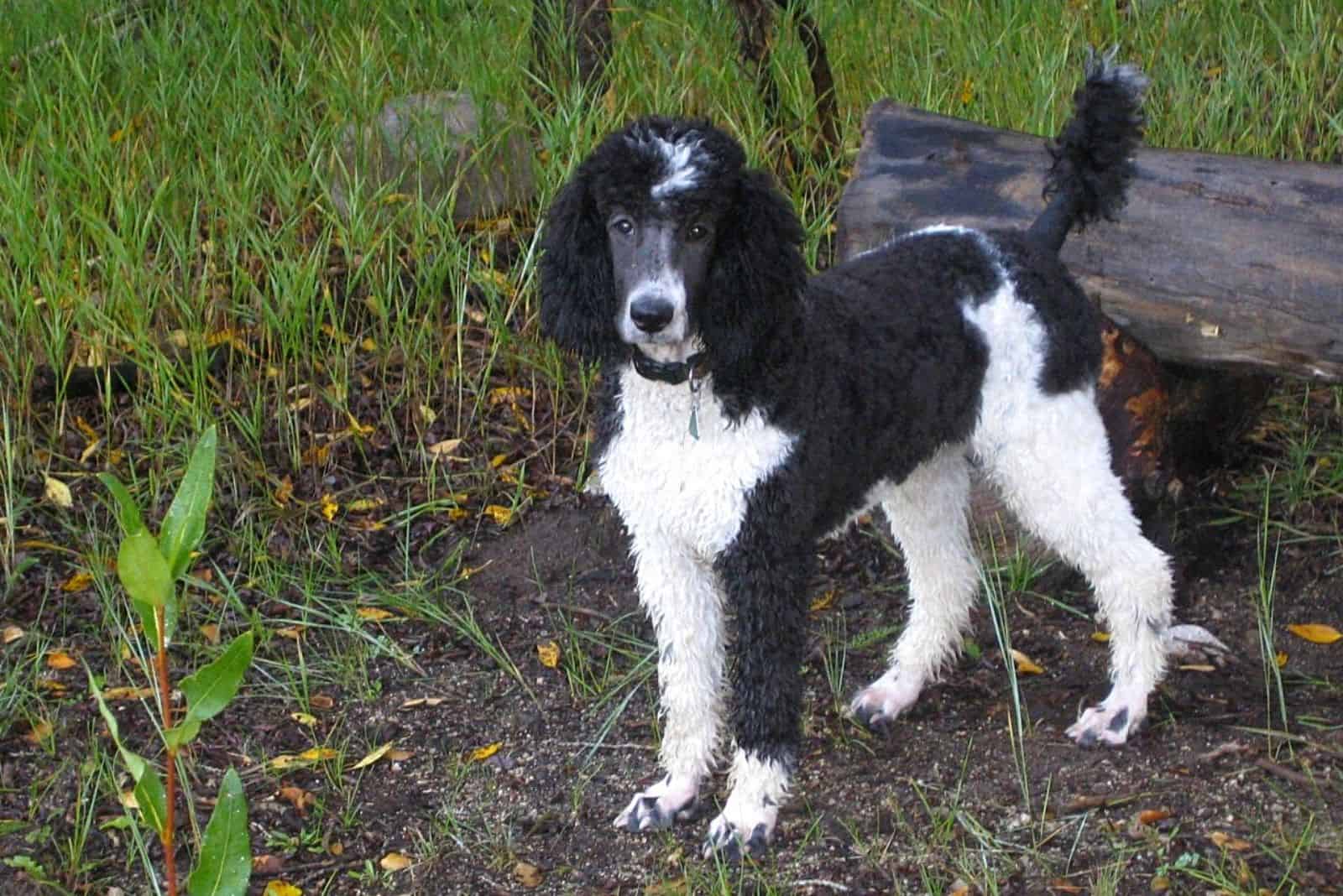
Even though their coat is quite unique, the Parti Standard Poodle isn’t a recent designer dog… they’re actually very old. Just take a look at old paintings and drawings from the 1800s. Many of them feature a Parti Poodle.
One of the most famous early records of Parti Poodles is from 1631 when Rembrandt was painted with his brown and white Poodle.
The parti markings are popular, but not with the official dog shows. The AKC also doesn’t allow these Poodles to be shown. That’s why many dog breeders avoid breeding such color versions.
Are Parti Poodles Purebred?
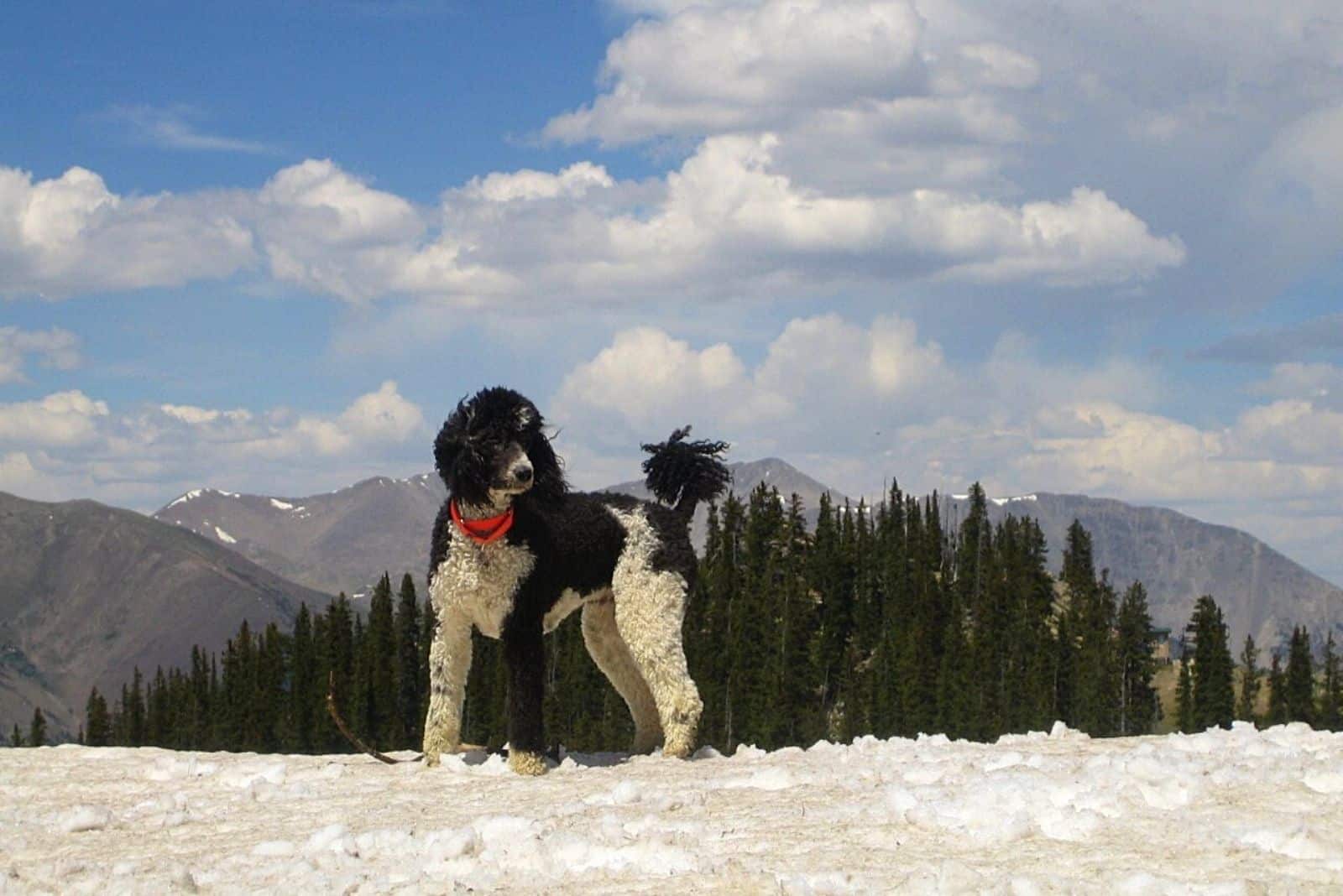
Yes, of course they are!
Parti Poodles can be born in litters of two purebred, solid-colored Poodles. Besides being popular in purebred Poodles, many doodle mixes also have a parti color variation.
It’s quite possible to have a litter made of solid-colored puppies with one parti Poodle in the mix. Half solid-colored and half patched pups are also a possibility. Even a litter with only parti dogs is possible!
Parti markings have become so popular recently that many dog breeders began specifically breeding p arti Poodles.
Can Parti Poodles Participate In Dog Shows?
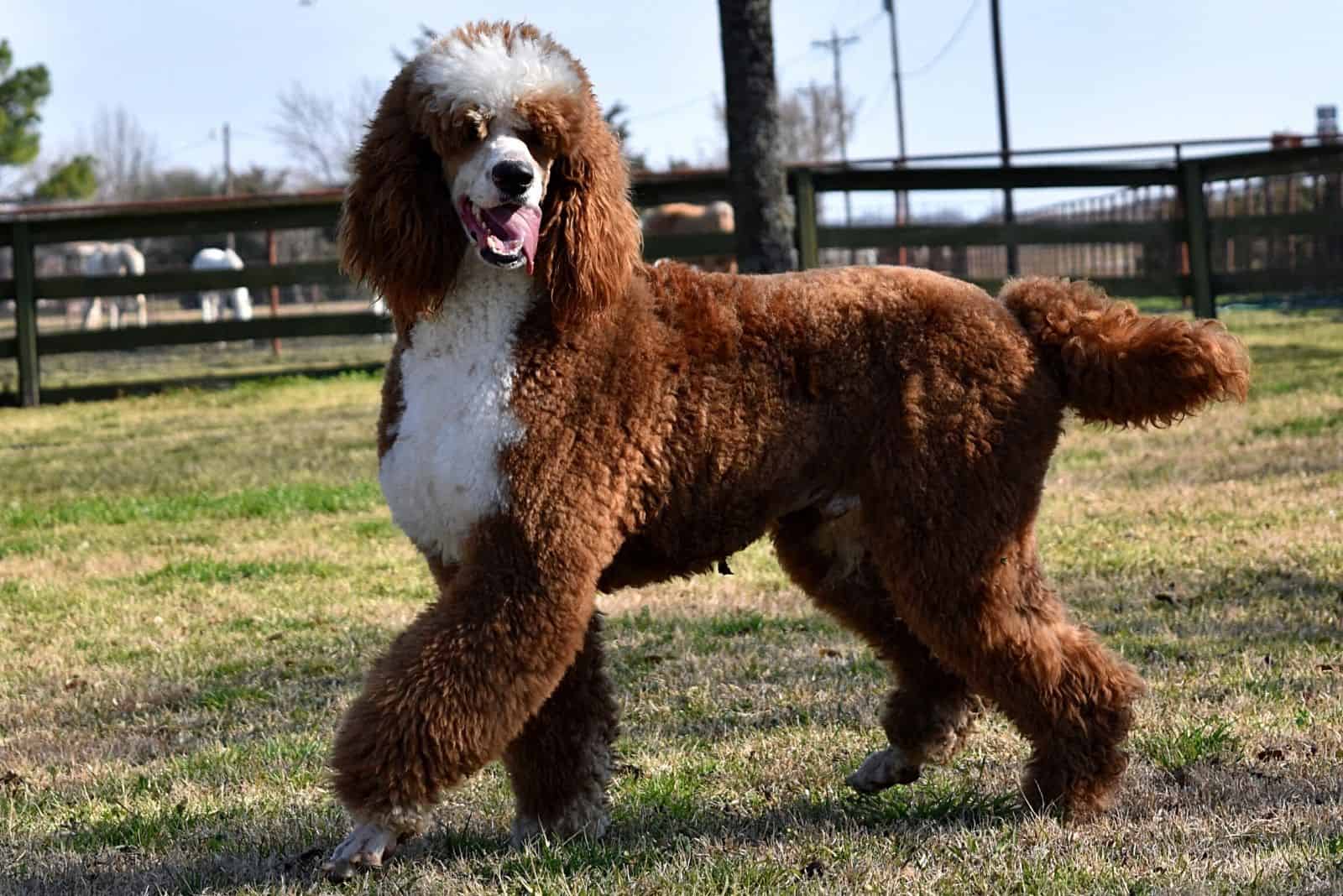
Unfortunately, the AKC doesn’t allow parti Poodles at conformation shows. However, this doesn’t mean that they can’t be registered because two registered Poodle parents can produce a parti-colored puppy.
While parti Poodles aren’t popular with dog show enthusiasts, they are extremely in demand by many dog owners. In fact, parti puppies send faster than any other color that can enter a dog show.
Those of you who are planning to attend a conformation show should consider getting a solid white, brown, apricot, blue, or black Poodle.
Are Parti Poodles Healthy?
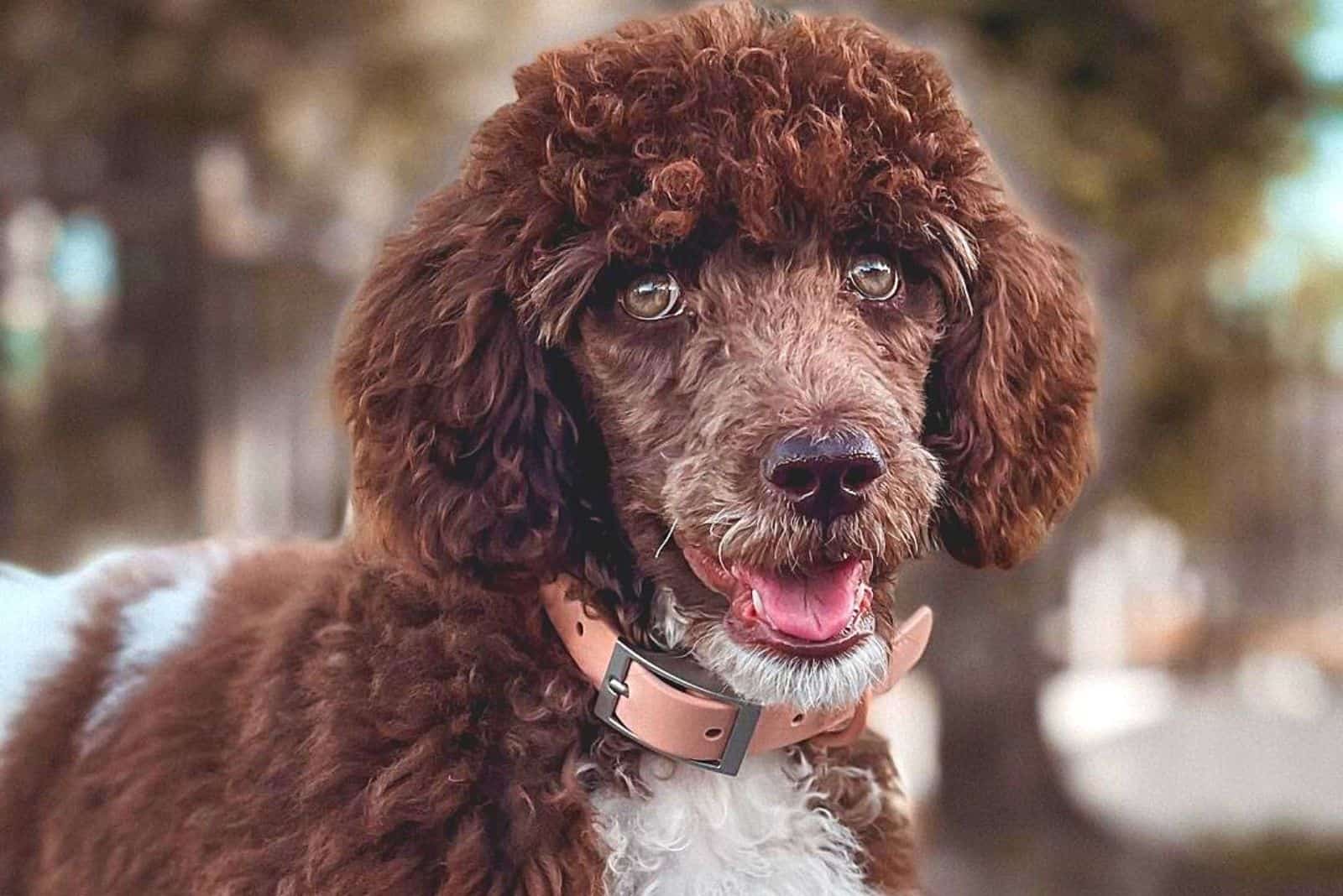
Poodles, that also means parti Poodles, are generally healthy. But, like many other breeds, they are prone to certain health issues. Not all Poodles are prone to them, but it’s important to know what they’re prone to.
When buying a parti Poodle puppy, try to find a good breeder who will show you health clearances for both the puppy and the puppy’s parents. These health tests prove that the dog has been tested and cleared of some conditions.
You should expect to see health clearances from the Orthopedic Foundation of Animals (OFA) for hip dysplasia (with a score of fair and better), elbow dysplasia, hypothyroidism, Von Willebrand’s disease, thrombopathia, and eye certifications from the Canine Eye Registry Foundation.
Here’s a detailed list of all the possible health conditions a Poodle may suffer from:
• Addison’s Disease. This disease is also known as hypoadrenocorticism. It’s a serious condition caused by an insufficient production of adrenal hormones by the adrenal gland. Dogs with Addison’s vomit, have a poor appetite and are lethargic.
Since these symptoms are a bit vague, they can often be mistaken for some other conditions. It’s easy to miss the diagnosis until it reaches the advanced stage.
Other severe signs occur when a dog is stressed or when the potassium level is high enough to interfere with heart function, causing shock and eventual death.
• Gastric Dilatation-Volvulus. This condition is commonly known as bloat. It’s a life-threatening condition affecting large, deep-chested dogs like Poodles, especially if they get one big meal every day, eat rapidly, and drink lots of water after eating. Find out more about this dog’s desirable nutrition in our Poodle feeding chart.
Bloat occurs when the stomach is distended with gas or air and then twists. The dog is unable to belch or vomit in order to get rid of the excess air, and the normal return of blood to the heart is impeded.
Blood pressure drops and the dog goes into shock. Without immediate medical help, the dog could die. Symptoms of bloat include a distended abdomen, salivating excessively, retching without throwing up, restlessness, depression, being lethargic, and having a rapid heart rate.
If you suspect bloat, go straight to the vet.
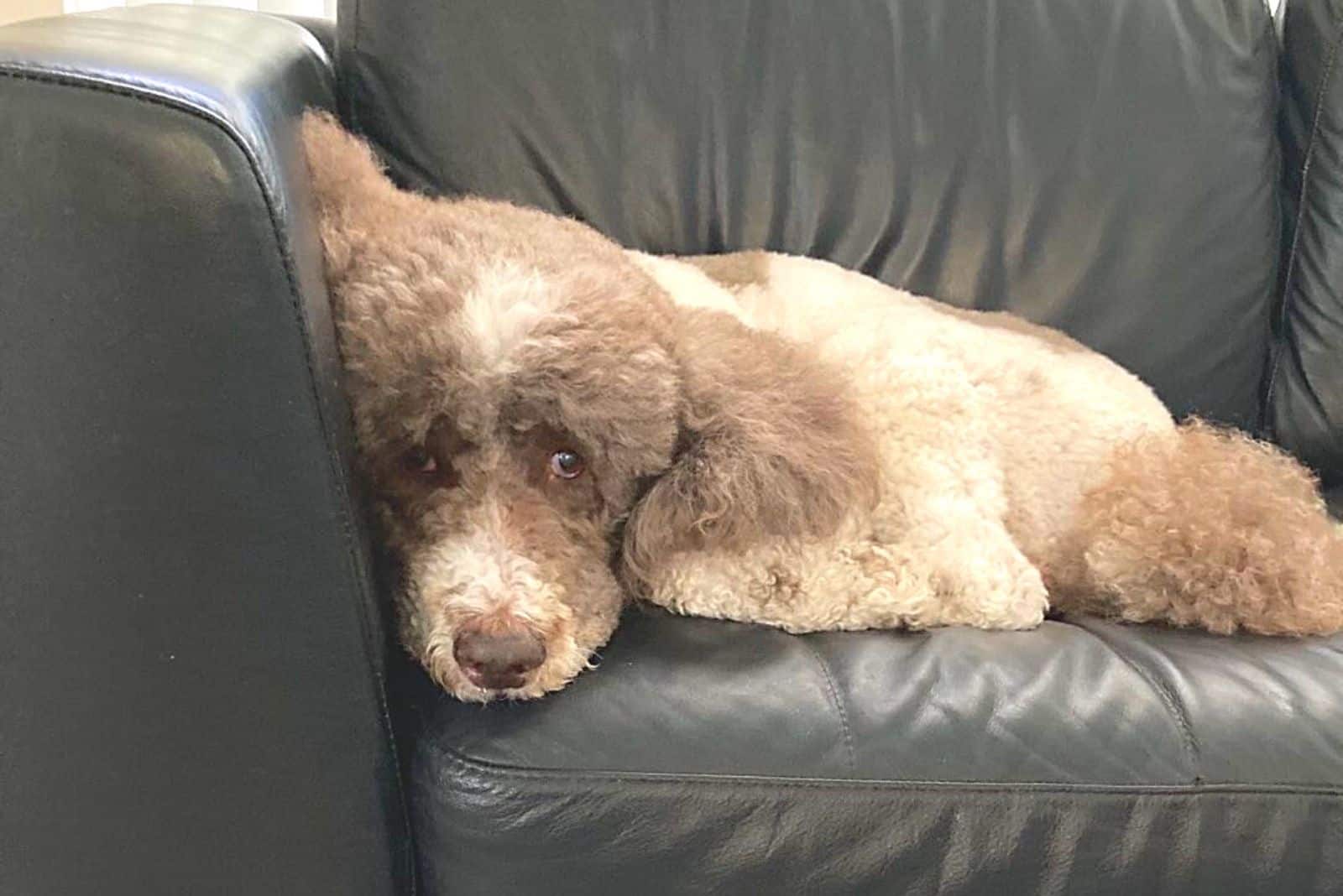
• Cushing’s Disease or Hyperadrenocorticism is a condition that occurs when the body produces too much cortisol. It can be due to an imbalance of the pituitary or adrenal gland, or it can occur when a dog has too much cortisol.
Common signs are excessive drinking and urination. The treatments include surgery and medication.
• Epilepsy is a common cause of seizures in all varieties of Poodles. It’s usually an inherited condition that causes mild or severe seizures. Seizures may be exhibited by unusual behavior like running frantically, staggering, or hiding.
Even though seizures are hard to watch, the long-term prognosis for dogs suffering from idiopathic epilepsy is actually very good.
Keep in mind that seizures may happen because of other reasons like metabolic disorders, infections that affect the brain, tumors, exposure to poisons, head injuries, etc. So, if your Poodle has seizures, rush it to the vet right away!
• Hip Dysplasia is a condition when the hip socket is poorly formed or the ligaments are loose enough to allow the ball of the thigh bone to slide part of the way out of the hip socket. Canine hip dysplasia is inherited. However, environmental factors play a huge role in its development.
Over time, the degeneration of the joint can cause arthritis and pain, and even lameness. Factors that contribute to the development of this condition are excess weight, prolonged or excessive exercise before maturity, a fast growth rate, a high-calorie supplemented diet, etc.
Veterinary care includes nutritional supplements, medication, and in some cases, surgery.
• Hypothyroidism is caused by an underactive thyroid gland. This gland is responsible for conditions such as epilepsy, hair loss, obesity, lethargy, hyperpigmentation, pyoderma, and other skin conditions.
• Legg-Perthes Disease. This is another disease of the hip joint and many breeds are prone to it. When a Poodle is suffering from Legg-Perthes, the blood supply to the head of the femur is decreased, and the head of the femur, which connects to the pelvis begins to disintegrate.

The first signs are limping and atrophy of the leg muscle, and it usually occurs when puppies are four to six months old.
This condition can be corrected with surgery by cutting off the diseased femur so that it isn’t attached to the pelvis any longer. The scar tissue that results from the surgery creates a false joint and the puppy is usually pain-free.
• Patellar Luxation means dislocation of an anatomical part, such as a bone at a joint. Patellar Luxation is when the knee joint slides in and out of place, causing pain. It usually affects the hind legs. It can be crippling, but many dogs manage having it.
• Progressive Retinal Atrophy (PRA) is a family of eye diseases that involves the gradual deterioration of the retina. First, dogs become night-blind. As the disease progresses, they lose sight during the day. Still, many dogs manage to adapt completely to their limited or loss of vision.
• Optic Nerve Hypoplasia is a condition with congenital failure in the development of the optic nerve. It causes blindness and abnormal pupil response in the affected eye.
• Sebaceous Adenitis (SA) is a serious problem in Poodles, especially Standard ones. Almost 50% of all Standard Poodles are either carriers or affected.
When a dog has SA, the sebaceous glands in the skin become inflamed for unknown reasons until they eventually become destroyed. These are the glands that produce sebum, a fatty secretion that prevents the skin from drying.
This condition is usually noticed when the dog is between one and five years old.
Affected dogs usually have a dry, scaly skin, with hair loss on top of the head, neck, and back. Severely thickened skin and unpleasant odor are the main symptoms.
• Von Willebrand’s Disease is an inherited blood disorder that interferes with the blood’s ability to clot. The main symptom is excessive bleeding after an injury or surgery. Other symptoms are nosebleeds, bleeding gums, or bleeding in the stomach or intestines.
Unfortunately, there is no cure for this disease. The only treatment is blood transfusions from other dogs. Still, most dogs with Von Willebrand’s disease lead a normal life.
Dogs with this disease shouldn’t be bred!
Lifespan Of A Parti Poodle
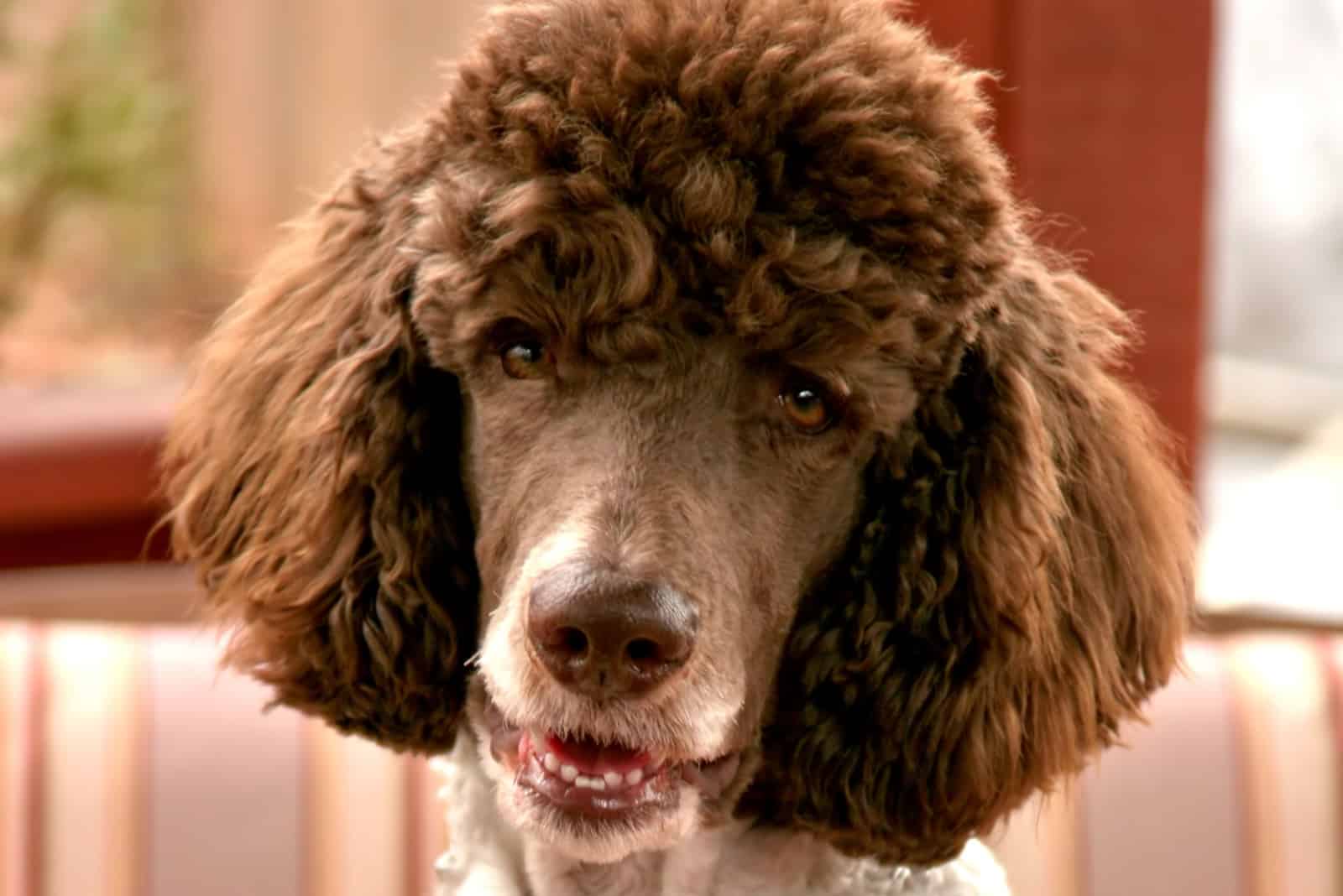
Parti Poodles live just as long as solid-colored Poodles. The Standard Poodle lives around thirteen years, the Miniature version lives up to fifteen years, and the Toy may live as much as seventeen years. In fact, small dogs usually live longer than large ones.
The color doesn’t have anything to do with the lifespan or health in any way!
Is There A Difference Between A Parti Poodle And A Phantom Poodle?
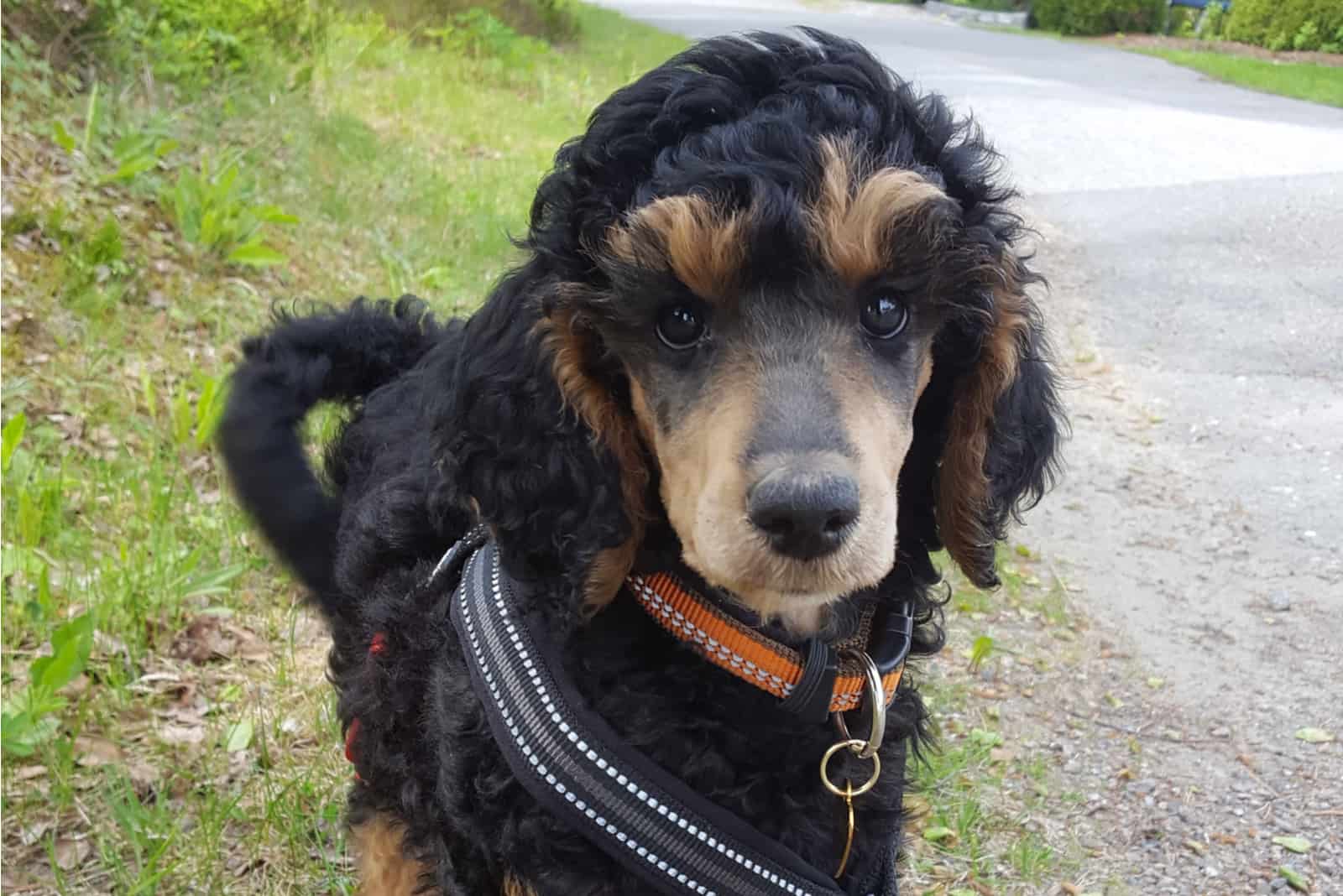
A Phantom Poodle has a solid color coat and bits of a secondary color. This secondary color only covers small bits of the body, such as on the chest, on the eyebrows, or on the legs. This makes many Phantom Poodles look the same.
On the other hand, parti Poodles have at least 50% of their body colored white while the second color is distributed across the body. The colors have an uneven pattern and always look unique.
Are Parti Poodle Puppies More Expensive?
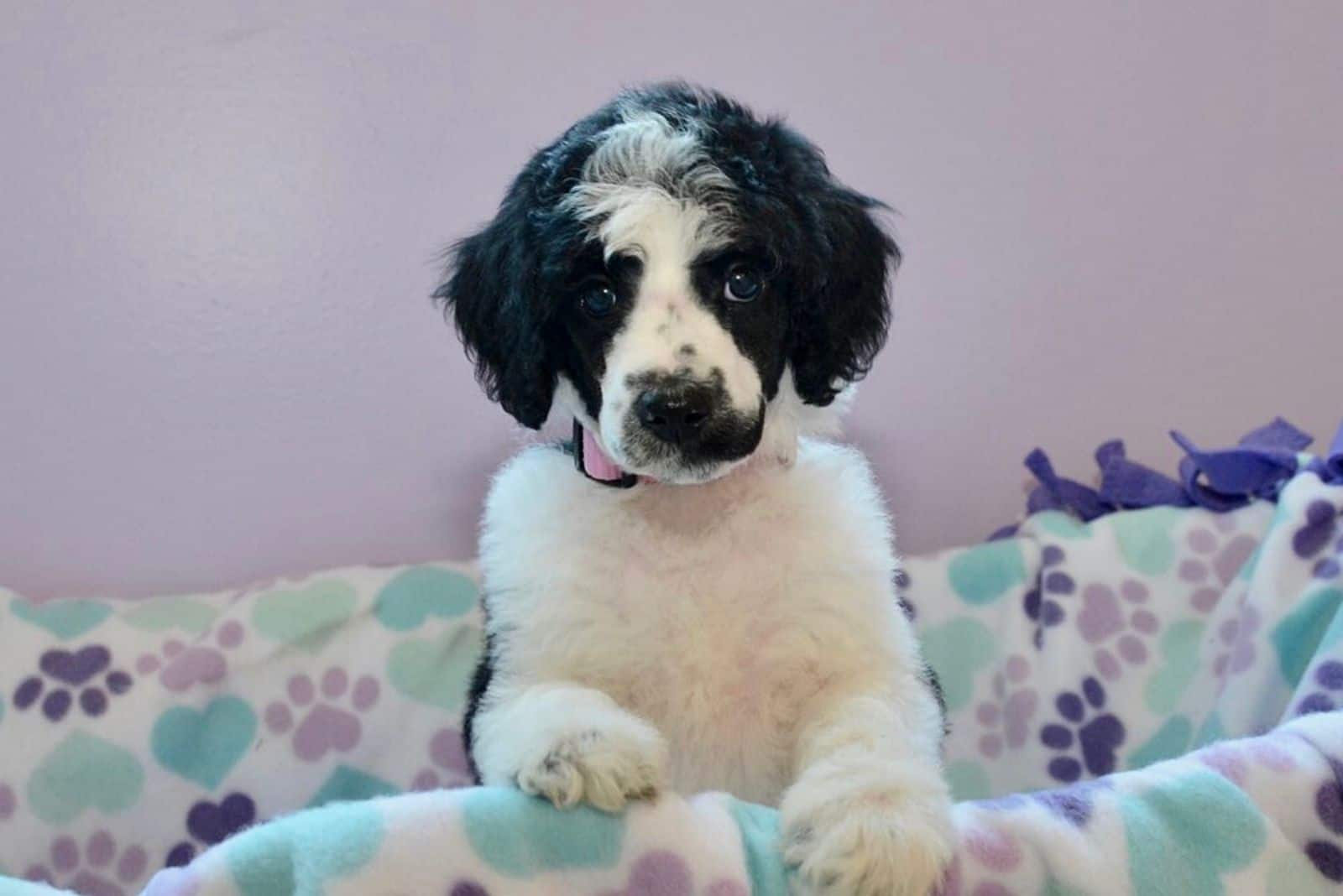
The demand usually determines the price. A lot of dog owners look for parti Poodles only because they look exotic and cool. This is exactly why dog breeders sell parti Poodle puppies for higher prices than their solid-colored siblings. As always, the demand can and will determine the price.
You can expect to pay around $2,000 for a parti Poodle puppy.
Bear in mind that the breeder must be a reputable one. He or she must be able to provide health tests, and the dogs should show reliable temperament. Never buy a puppy from a breeder who only breeds a certain color. It means they’re doing it only for the money.
Go see the parents if it’s possible. The best puppies come from calm and friendly parents without any genetic issues.
Picking The Color: Tuxedo, Black And White, Brindle, White Parti Poodle, Or…?
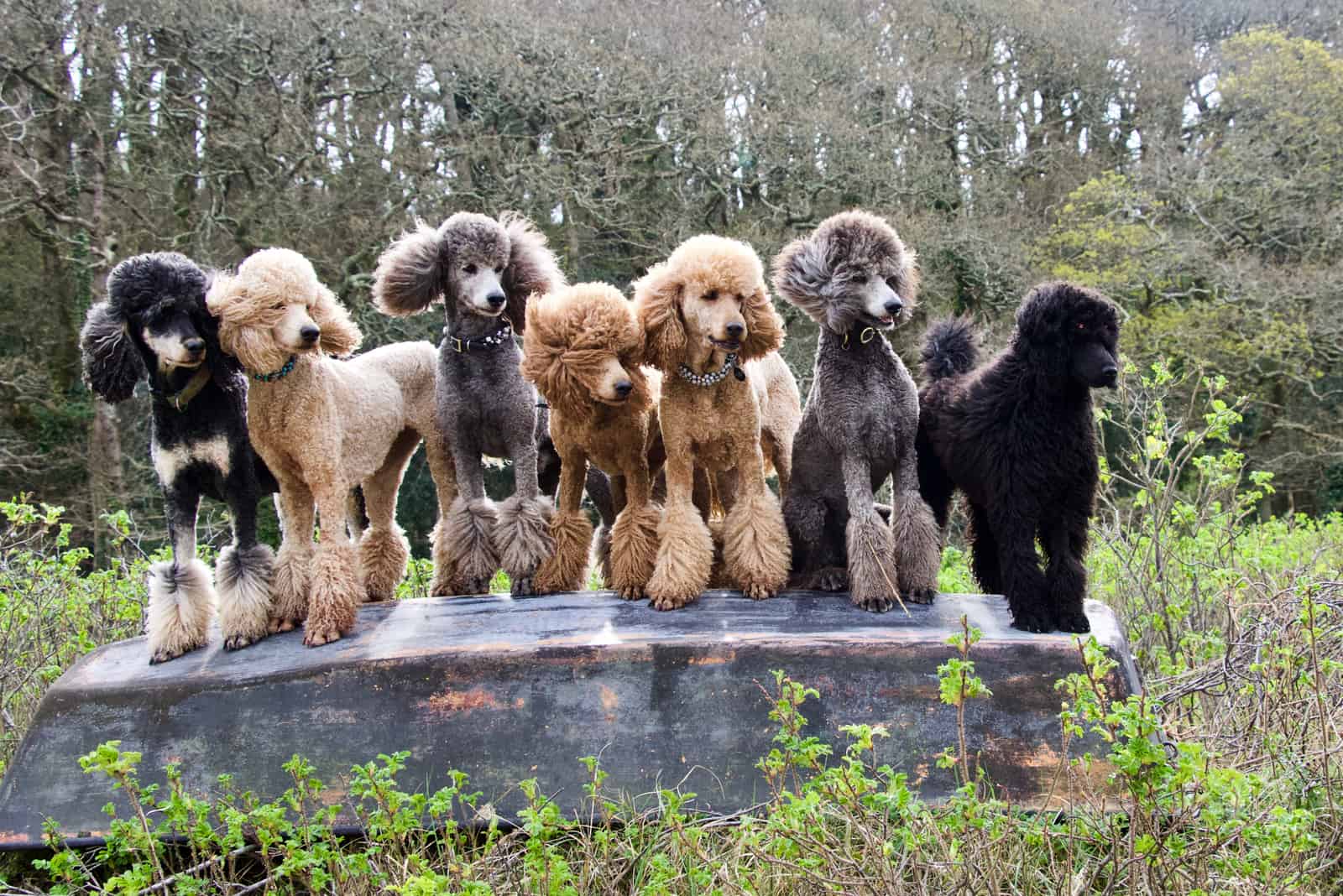
Whichever color you choose, you’re gonna love your Poodle!
It’s their temperament that makes these dogs so amazing. Don’t let the color be your only criterion when choosing a Poodle puppy. Make sure the puppy is healthy and friendly, so it fits in your family.
Choosing between tuxedo, black and white, white parti, brindle, or any other color option is a big decision, so think about it for a while.
Finally
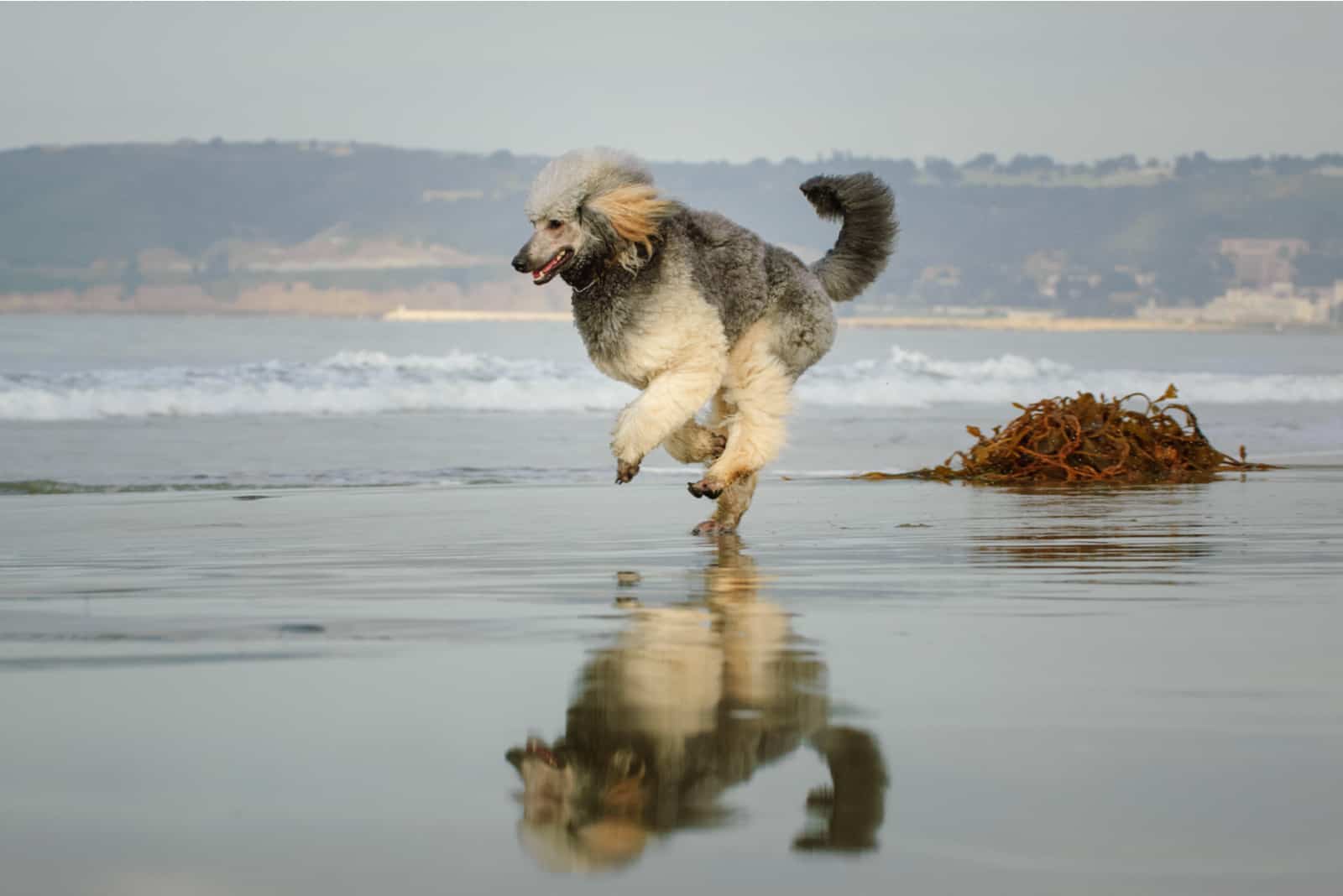
Now that you’ve read this, you can call yourself a parti Poodle expert. Poodles are amazing dogs. They are great for families, and they are active individuals. They’re not preppy pooches like everyone says they are.
Spend a day with a Poodle and you’ll see how great they are.
Read Next: 8 Reputable Poodle Breeders In Colorado
